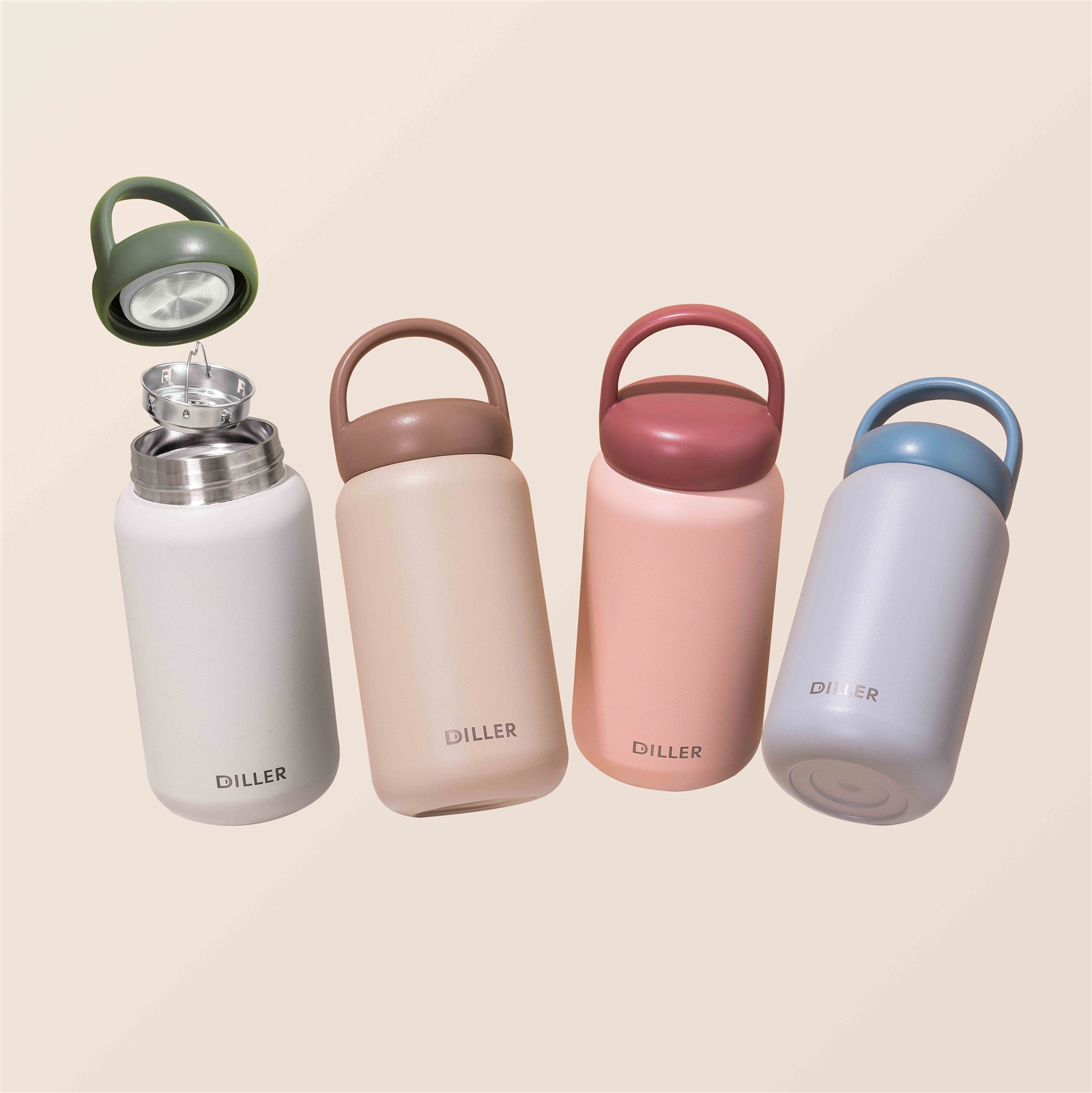Stainless steel insulated cups, as indispensable daily necessities in daily life, have a significant impact on insulation effectiveness, durability, and health and safety due to their material selection. At present, the common stainless steel insulation cup materials on the market mainly include 304 stainless steel, 316 stainless steel, and 316L stainless steel. The following will compare stainless steel insulation cups of different materials from the perspective of advantages and disadvantages.
304 stainless steel is a common chromium nickel stainless steel with excellent corrosion resistance, heat resistance, high strength, and good low-temperature performance.
The chemical composition of 304 stainless steel mainly includes elements such as iron, chromium, nickel, carbon, silicon, manganese, phosphorus, sulfur, etc. Among them, the content of chromium and nickel is relatively high, at 18% and 8%, respectively, which makes 304 stainless steel have high corrosion resistance in oxidizing and acidic media. In addition, 304 stainless steel also has good heat resistance and can maintain stable performance at high temperatures. In addition, 304 stainless steel also has high strength and good low-temperature performance, which can maintain excellent performance in low-temperature environments.
304 stainless steel is widely used in various fields, such as food containers, medical devices, chemical equipment, environmental protection equipment, building structures, etc. It can be used to make tableware, kitchenware, medical equipment, chemical equipment, automotive parts, building materials, and other products.
It should be noted that although 304 stainless steel has high corrosion resistance and stability, it is still necessary to avoid long-term contact with corrosive substances such as strong acids and alkalis during use to maintain its excellent properties. Meanwhile, due to the high cost of 304 stainless steel, a balance between economic cost and performance needs to be considered when using it.
316 stainless steel is a type of stainless steel containing molybdenum, which has higher corrosion resistance and strength.
The chemical composition of 316 stainless steel mainly includes elements such as iron, chromium, nickel, carbon, silicon, manganese, phosphorus, sulfur, etc. Among them, the content of chromium and nickel is relatively high, at 16% and 10%, respectively, while containing a certain amount of molybdenum element, which makes 316 stainless steel have higher corrosion resistance in oxidizing and acidic media. In addition, 316 stainless steel also has high strength and good low-temperature performance, which can maintain good performance in high strength and high corrosion resistance environments.
316 stainless steel is widely used in various fields, such as medical devices, chemical equipment, environmental protection equipment, food containers, etc. It can be used to produce products such as medical devices, chemical equipment, food containers, automotive components, and building materials.
It should be noted that although 316 stainless steel has high corrosion resistance and stability, it is still necessary to avoid prolonged contact with corrosive substances such as strong acids and alkalis during use to maintain its excellent properties. Meanwhile, due to the high cost of 316 stainless steel, a balance between economic cost and performance needs to be considered when using it.
The main differences between 316 stainless steel and 316L stainless steel are as follows:
1. Carbon content: The carbon content of 316L stainless steel is lower than that of 316 stainless steel, with the former generally less than 0.03% and the latter generally less than 0.08%.
2. Chromium content: The chromium content of 316L stainless steel is higher than that of 316 stainless steel, with the former generally exceeding 16% and the latter generally exceeding 17%.
3. Corrosion resistance: Due to the low carbon content of 316L stainless steel, its corrosion resistance is better than that of 316 stainless steel.
4. Strength and hardness: Due to the low carbon content and high chromium content of 316L stainless steel, its strength and hardness are higher than those of 316 stainless steel.
5. Application field: 316 stainless steel is suitable for some ordinary stainless steel products, such as tableware, kitchen utensils, etc; 316L stainless steel is suitable for high demand applications such as medical devices and chemical equipment.
Overall, 316L stainless steel has better corrosion resistance and strength compared to 316 stainless steel, and its application fields are also more extensive.


